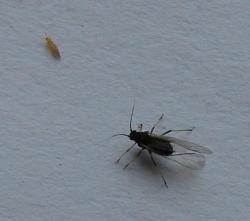sooby said:I wondered about thrips but a specific species of thrips isn't going to destroy a garden or raspberries  Thrips are not a beetle either.
Thrips are not a beetle either.
I wondered the same thing, but saw this:
Thrips are primarily phytophages; that is, they eat plants and parts of plants, such as pollen, flowers, leaves, fruits, twigs, or buds. They consume flower heads of daisies and dandelions. In addition, they feed on onions, carrots, melons, cucumbers, peas, beans, roses, gladiolus, irises, and mullein. Plant-feeding thrips pierce a hole using their mandibular stylet to suck out the contents of individual cells. Pollen-feeding thrips ingest the contents of individual pollen grains.
Some species that live in litter eat fungi or decaying plant materials. Others are gall inducers. There are some species of thrips that feed on mites, small insect larvae, and other species of thrips.
Thrips are not a beetle either.
